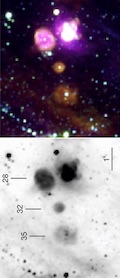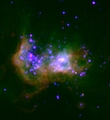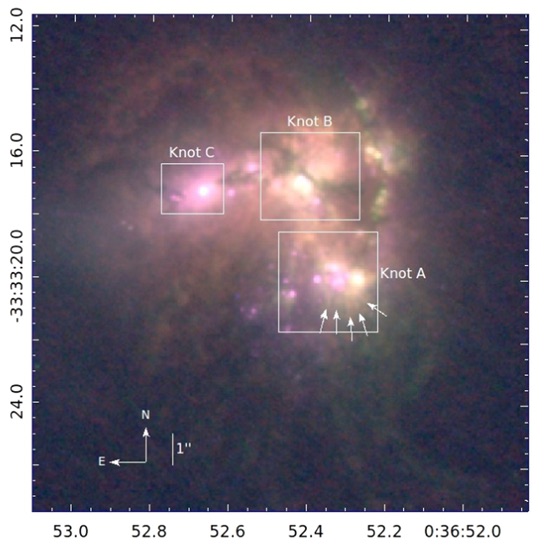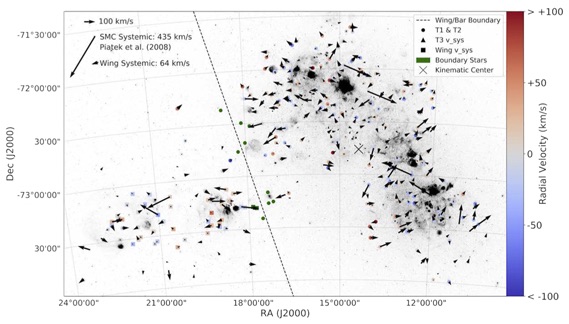



|
Welcome to FANG!
What drives the evolution of galaxies? One of the most important factors is energetic feedback from massive stars. The hottest, most massive stars produce vast quantities of UV ionizing radiation, and end their short lives as supernova explosions. These shocks generate hot gas in galaxies and synthesize the chemical elements in the universe. The stars themselves are also responsible for photoionizing discrete nebulae, diffuse interstellar medium, and the early cosmos itself. All of these effects originating from the massive star population are fundamental drivers of galaxy evolution. In addition, the relationships between stellar and gaseous galactic components on all scales form the basis for interpreting observations of galaxies and phenomena in the distant universe. Sally Oey's research group, Feedback Activity in Nearby Galaxies (FANG), focuses on this massive star feedback to the interstellar and intergalactic medium, on local, global, and cosmic scales.
CURRENT PROGRAMS The escape of ionizing radiation from galaxies and super star clusters is a fundamental problem that is poorly understood. What conditions allow ionizing radiation to penetrate the dense gas in star-forming clouds and the interstellar medium? We are currently studying extreme, local starbursts to clarify these processes. Some are resolved objects like Mrk 71 and Haro 11, while others are intense, high-ionization objects like the "Green Pea" galaxies. Our group is at the forefront of establishing a new paradigm for massive-star feedback, where superwinds from compact young star clusters are suppressed by catastrophic cooling and high interstellar pressure.  Hubble image of starburst galaxy Haro 11 in [O II] (WFC3/FQ378N), [O III] (ACS/F505N), and U (ACS/F336W). From a paper by undergraduate Ryan Keenan et al. (2017). Field massive stars are a key probe of massive star-forming processes. How many are runaways ejected from clusters, and how many form in relative isolation? Our Runaways and Isolated O-Type Star Spectroscopic Survey of the SMC (RIOTS4) has been generating a wealth of data for a spatially complete sample in this nearby galaxy. We are quantifying the properties of this luminous, but enigmatic, stellar population, obtaining mass, radial velocity, proper motion, spin, binarity, and other properties. We are establishing the origins of field stars due to dynamical ejections from clusters, acceleration by supernova kicks, and in-situ formation in the field.  Residual proper motions of RIOTS4 field OB stars in the Small Magellanic Cloud. Figure made by undergraduate Johnny Dorigo Jones, in Oey et al. (2018). |

